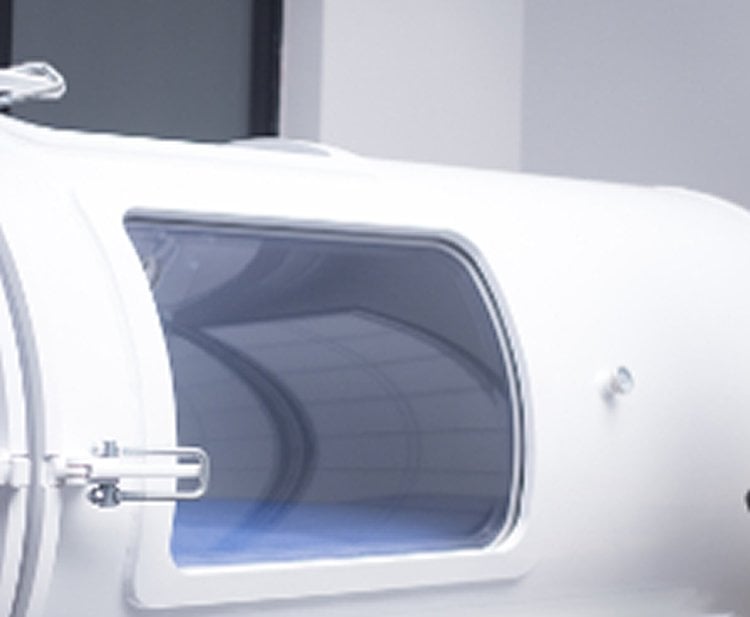Summary: Researchers report hyperbaric oxygen therapy could prove to be beneficial in the treatment of Alzheimer’s disease. According to a new study, HBOT may improve Alzheimer’s pathology and reduce some of the behavioral symptoms associated with the disease.
Source: AFTAU.
A new Tel Aviv University study reveals that hyperbaric oxygen treatments may ameliorate symptoms experienced by patients with Alzheimer’s disease.
“This revolutionary treatment for Alzheimer’s disease uses a hyperbaric oxygen chamber, which has been shown in the past to be extremely effective in treating wounds that were slow to heal,” says Prof. Uri Ashery of TAU’s Sagol School of Neuroscience and the Faculty of Life Sciences, who led the research for the study. “We have now shown for the first time that hyperbaric oxygen therapy can actually improve the pathology of Alzheimer’s disease and correct behavioral deficits associated with the disease.
“This research is extremely exciting as it explores a new therapy that holds promise as a treatment of Alzheimer’s disease,” Prof. Ashery says.
The research was conducted by PhD student Ronit Shapira of TAU’s Faculty of Life Sciences; Prof. Beka Solomon and Dan Frenkel of TAU’s Sagol School of Neuroscience and Faculty of Life Sciences; and Prof. Shai Efrati of TAU’s Sackler Faculty of Medicine, Sagol School of Neuroscience and Assaf-Harofeh Medical Center. It was published in the journal Neurobiology of Aging.
Patients who undergo hyperbaric oxygen therapy for different conditions breathe in pure oxygen in a pressurized room or chamber. In this chamber, the air pressure is increased to twice that of normal air. Under these conditions, oxygen solubility in the blood increases and is transported by blood vessels throughout the body. The added oxygen stimulates the release of growth factors and stem cells, which themselves promote healing.
The TAU scientists used a mouse model of Alzheimer’s disease and built a custom-made hyperbaric oxygen chamber suitable for small animals. Then, over the course of 14 days, the team administered hyperbaric oxygen treatment to the mice for one hour per day. After 14 days, the mice underwent a series of behavioral tests as well as tissue biochemical tests to understand how hyperbaric oxygen treatment affects the pathological hallmarks associated with Alzheimer’s disease.
The treatment reduced behavioral deficiencies compared to the non-transgenic control mice, reduced plaque pathology by 40%, and reduced neuroinflammation by about 40%.
“There are serious clinical implications to this research,” says Shapira, principal investigator of the study. “Hyperbaric oxygen treatment is a well-tolerated and safe therapy used in clinics around the world for various medical conditions, including neurological disorders. Although further research is needed to elucidate the underlying beneficial mechanisms of the therapy and to evaluate its beneficial effects in various Alzheimer patient populations, it holds great potential for the treatment of Alzheimer’s disease.”

“In this hallmark study, the beneficial physiological effects of hyperbaric oxygen therapy were directly demonstrated on Alzheimer-affected brain tissue,” says Prof. Efrati. “We assume that the main challenge in human use will be to initiate the treatment at early stages before significant amount of brain tissue is lost.”
The researchers are currently testing the effectiveness of hyperbaric oxygen treatment on an additional mouse model of Alzheimer’s disease to investigate the mechanisms underlying its impact on the disease.
Source: George Hunka – AFTAU
Publisher: Organized by NeuroscienceNews.com.
Image Source: NeuroscienceNews.com image is adapted from the AFTAU news release.
Original Research: Abstract for “Hyperbaric oxygen therapy ameliorates pathophysiology of 3xTg-AD mouse model by attenuating neuroinflammation” by Ronit Shapira, Beka Solomon, Shai Efrati, Dan Frenkel, and Uri Ashery in Neurobiology of Aging. Published online October 20 2017 doi:10.1016/j.neurobiolaging.2017.10.007
[cbtabs][cbtab title=”MLA”]AFTAU “Hyperbaric Oxygen Therapy May Alleviate Alzheimer’s Symptoms.” NeuroscienceNews. NeuroscienceNews, 5 December 2017.
<https://neurosciencenews.com/hyberbaric-oxygen-alzheimers-8113/>.[/cbtab][cbtab title=”APA”]AFTAU (2017, December 5). Hyperbaric Oxygen Therapy May Alleviate Alzheimer’s Symptoms. NeuroscienceNews. Retrieved December 5, 2017 from https://neurosciencenews.com/hyberbaric-oxygen-alzheimers-8113/[/cbtab][cbtab title=”Chicago”]AFTAU “Hyperbaric Oxygen Therapy May Alleviate Alzheimer’s Symptoms.” https://neurosciencenews.com/hyberbaric-oxygen-alzheimers-8113/ (accessed December 5, 2017).[/cbtab][/cbtabs]
Abstract
Hyperbaric oxygen therapy ameliorates pathophysiology of 3xTg-AD mouse model by attenuating neuroinflammation
There is a real need for new interventions for Alzheimer’s disease (AD). Hyperbaric oxygen therapy (HBOT), the medical administration of 100% oxygen at conditions greater than 1 atmosphere absolute, has been used successfully to treat several neurological conditions, but its effects on AD pathology have never been thoroughly examined. Therefore, we exposed old triple-transgenic (3xTg) and non-transgenic mice to HBOT followed by behavioral, histological, and biochemical analyses. HBOT attenuated neuroinflammatory processes by reducing astrogliosis, microgliosis, and the secretion of proinflammatory cytokines (IL-1β and TNFα) and increasing expression of scavenger receptor A, arginase1, and antiinflammatory cytokines (IL-4 and IL-10). Moreover, HBOT reduced hypoxia, amyloid burden, and tau phosphorylation in 3xTg mice and ameliorated their behavioral deficits. Therefore, we suggest that HBOT has multifaceted effects that reduce AD pathologies, even in old mice. Given that HBOT is used in the clinic to treat various indications, including neurological conditions, these results suggest HBOT as a novel therapeutic intervention for AD.
“Hyperbaric oxygen therapy ameliorates pathophysiology of 3xTg-AD mouse model by attenuating neuroinflammation” by Ronit Shapira, Beka Solomon, Shai Efrati, Dan Frenkel, and Uri Ashery in Neurobiology of Aging. Published online October 20 2017 doi:10.1016/j.neurobiolaging.2017.10.007






